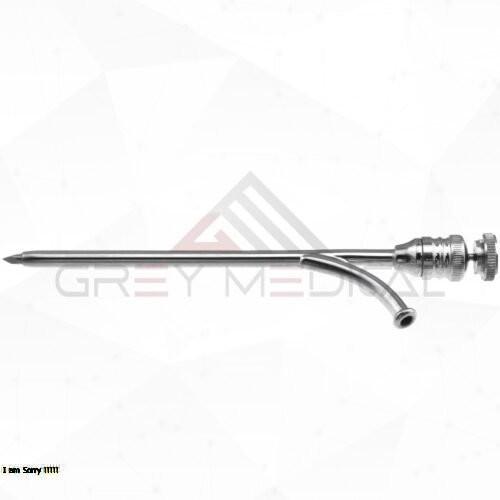The Essential Guide to Retractor Surgery Instruments

In the operating room, precision and visibility are paramount. Surgeons rely on a host of specialized tools to perform procedures safely and effectively. Among the most crucial of these are retractor surgery instruments. These devices are designed to hold back tissues, organs, or the edges of an incision, providing surgeons with a clear and unobstructed view of the surgical site. Without them, complex surgeries would be nearly impossible.
This guide will explore the world of surgical retractors, from their basic function to the various types available. We will examine how these tools contribute to successful surgical outcomes and highlight the importance of quality and innovation in their design, with a special look at companies like GreyMedical® that are pushing the boundaries of surgical technology. Understanding these instruments is key to appreciating the intricacies of modern surgery.

What Are Surgical Retractors and Why Are They Important?
A surgical retractor is an instrument used to separate and hold back tissues and organs, thereby exposing the underlying surgical field. This simple function is absolutely critical. By maintaining an open and stable operating area, retractors allow surgeons to work with greater accuracy, reduce the risk of accidental injury to surrounding structures, and improve the overall efficiency of the procedure.
The importance of clear visualization cannot be overstated. A clear field of view helps surgeons identify anatomical landmarks, navigate complex structures, and perform delicate tasks with confidence. Effective retraction minimizes tissue trauma by gently holding tissues aside rather than subjecting them to constant manual manipulation. This leads to better patient outcomes, including reduced postoperative pain and faster recovery times.
Types of Surgical Retractors
Surgical retractors can be broadly categorized into two main groups: hand-held and self-retaining. The choice between them depends on the specific procedure, the location of the incision, and the surgeon's preference.
Hand-Held Retractors
As the name suggests, hand-held retractors require a surgical assistant to hold them in place throughout the procedure. These instruments typically have a handle on one end and a blade, hook, or rake on the other. They offer great flexibility, allowing for quick adjustments to the position and tension as the surgery progresses.
Common examples include the Senn retractor, used in plastic surgery and small bone and joint procedures, and the Deaver retractor, a large, flat blade used to hold back deep abdominal walls. While versatile, their reliance on a human operator can lead to fatigue and potential for slight, unintended movements.
Self-Retaining Retractors
Self-retaining retractors are designed to remain in place without being held, freeing up the surgical assistant for other tasks. They often feature a locking mechanism, such as a ratchet or screw, that holds the arms of the retractor open. This provides stable, consistent retraction for the duration of the procedure, which is especially useful during long and complex surgeries.
The Weitlaner and Gelpi retractors are popular self-retaining models used for exposing superficial wounds. For larger abdominal or thoracic surgeries, frame-based systems like the Balfour or Thompson retractor are employed. These advanced retractor surgery instruments offer multiple points of retraction, providing unparalleled exposure in deep surgical cavities.
The Role of Innovation in Retractor Design
The field of medical technology is constantly evolving, and surgical instruments are no exception. Companies dedicated to innovation play a vital role in advancing the craft of surgery. GreyMedical® is one such company, a privately owned medical technology firm dedicated to excellence in the design and manufacture of surgical instruments. Their focus on quality craftsmanship ensures that surgeons have reliable and effective tools.
Innovation in retractor surgery instruments focuses on several key areas. This includes developing materials that are lighter and more durable, such as carbon fiber or specialized polymers, which reduce surgeon fatigue. Ergonomic designs are also crucial, ensuring that both hand-held and self-retaining retractors are comfortable to use and easy to adjust. Furthermore, modern retractors may incorporate features like integrated lighting or suction channels to further improve visibility at the surgical site.
Choosing the Right Retractor for the Procedure
Selecting the appropriate retractor is a critical decision made by the surgical team. Several factors influence this choice. The depth and location of the surgical site are primary considerations. A superficial skin lesion requires a much different retractor than a deep organ transplant.
The type of tissue being retracted also matters. Delicate tissues like nerves or blood vessels require gentle, atraumatic retractors to prevent damage. In contrast, dense tissues like muscle or bone may require more robust retractor surgery instruments capable of applying significant force. Ultimately, the surgeon’s experience and familiarity with specific instruments guide the final decision, ensuring the best possible tool is used for the job.
The Future of Surgical Retraction
The future of surgical retraction points toward even greater integration with technology. We are seeing the development of "smart" retractors with embedded sensors that can monitor tissue pressure and alert surgeons to potential nerve compression or ischemia. This data-driven approach can significantly enhance patient safety.
Additionally, as minimally invasive and robotic surgeries become more common, the demand for specialized retractor surgery instruments designed for small incisions and remote manipulation will continue to grow. Companies like GreyMedical®, with their commitment to innovation, are at the forefront of developing these next-generation tools that will shape the future of the operating room. By investing in superior design and material science, they help ensure that surgeons can perform at their best, leading to better outcomes for patients everywhere.
- Art
- Causes
- Crafts
- Dance
- Drinks
- Film
- Fitness
- Food
- Juegos
- Gardening
- Health
- Inicio
- Literature
- Music
- Networking
- Otro
- Party
- Religion
- Shopping
- Sports
- Theater
- Wellness


